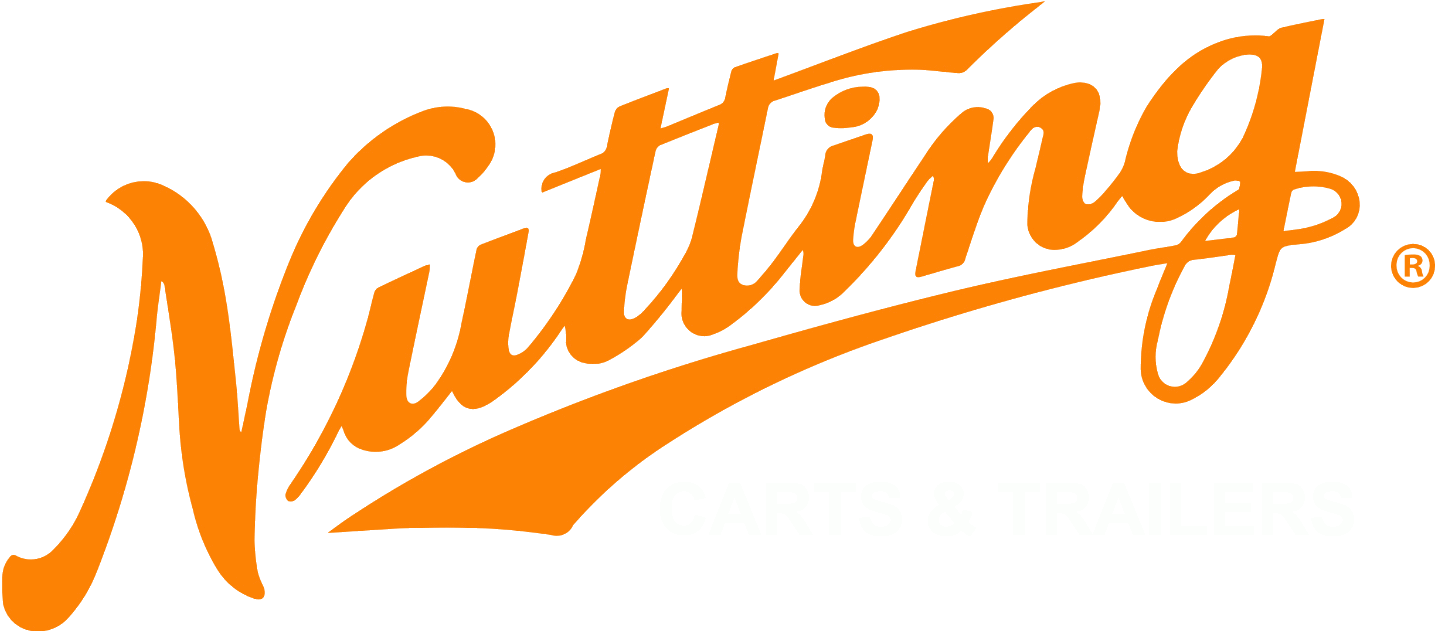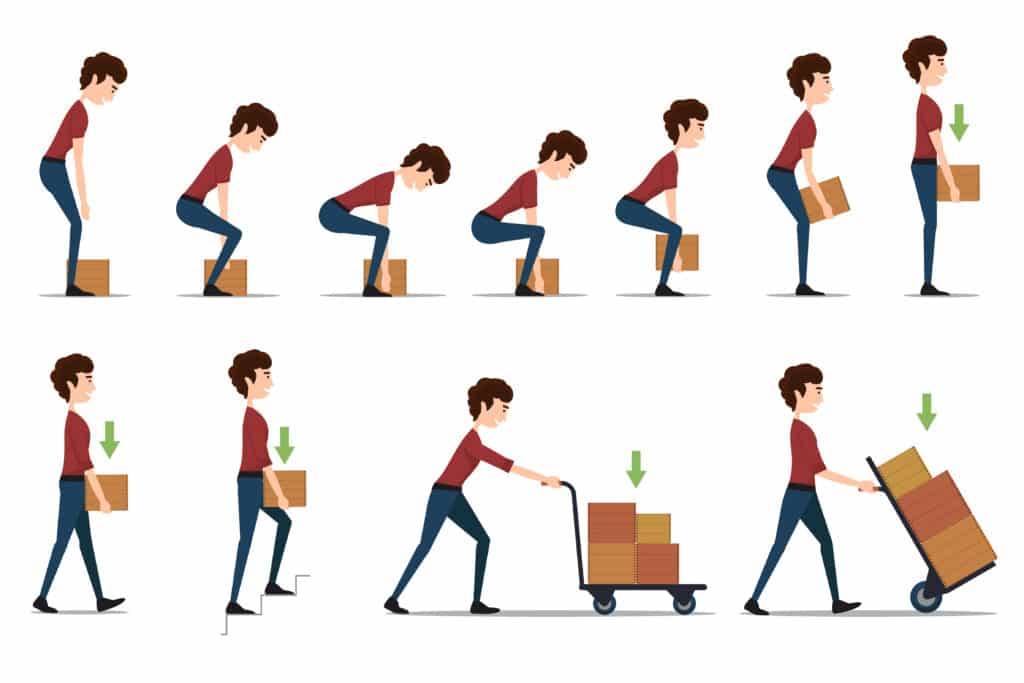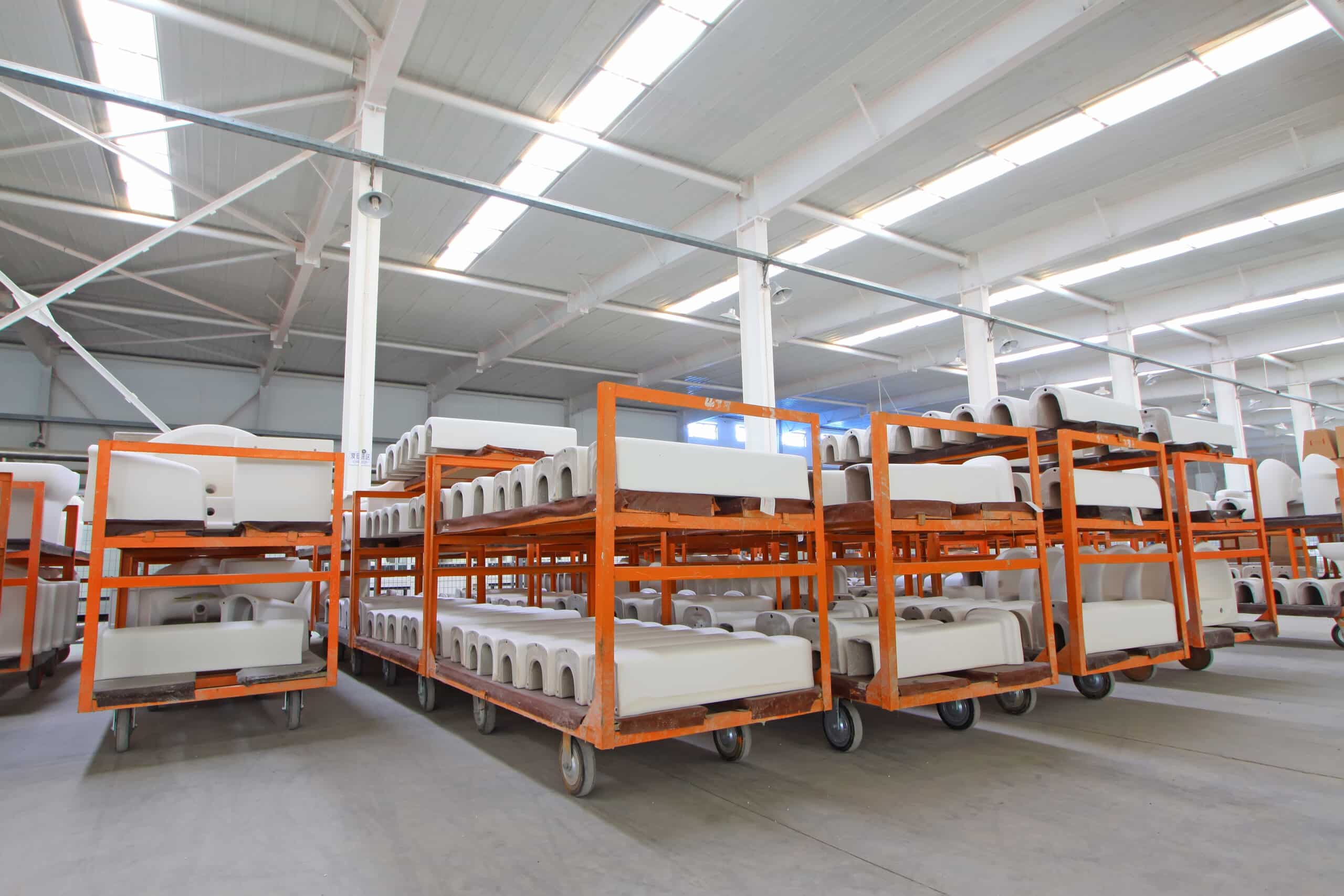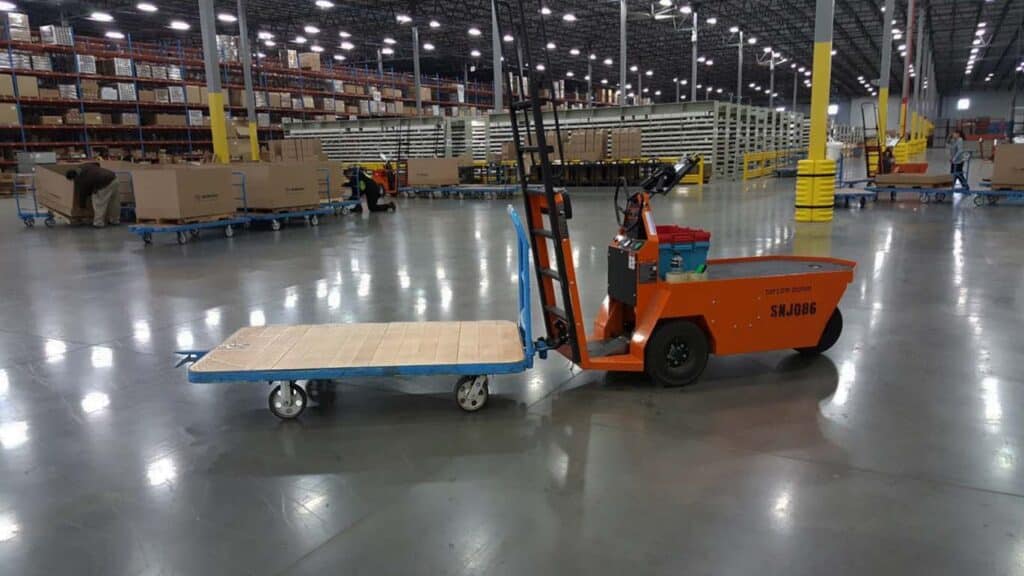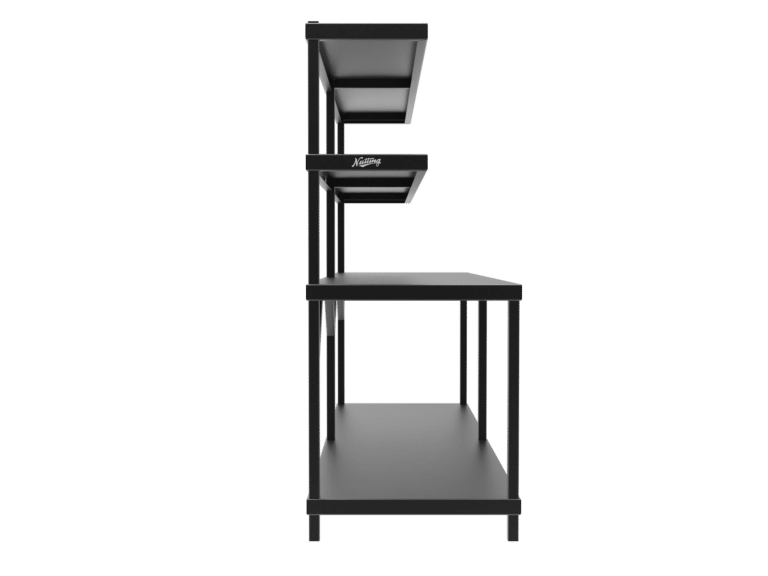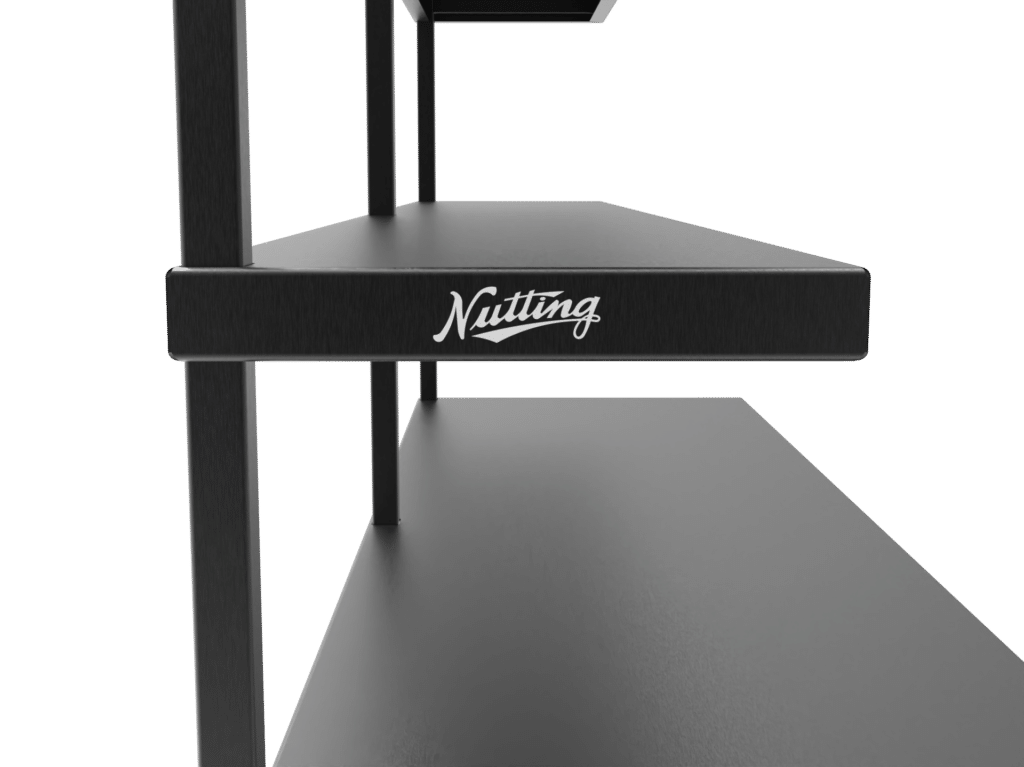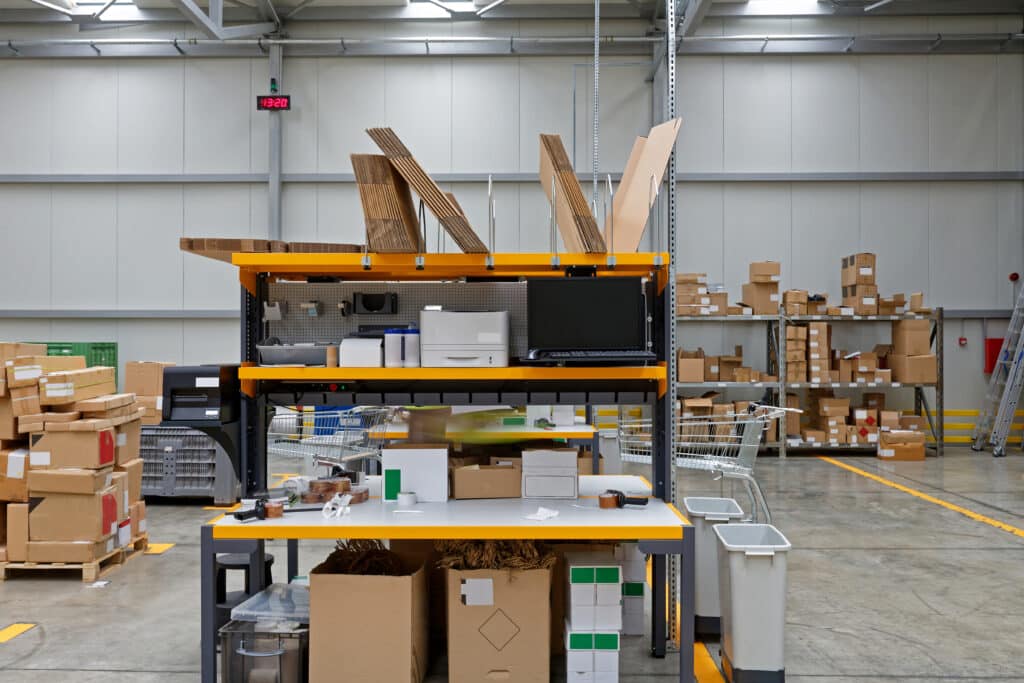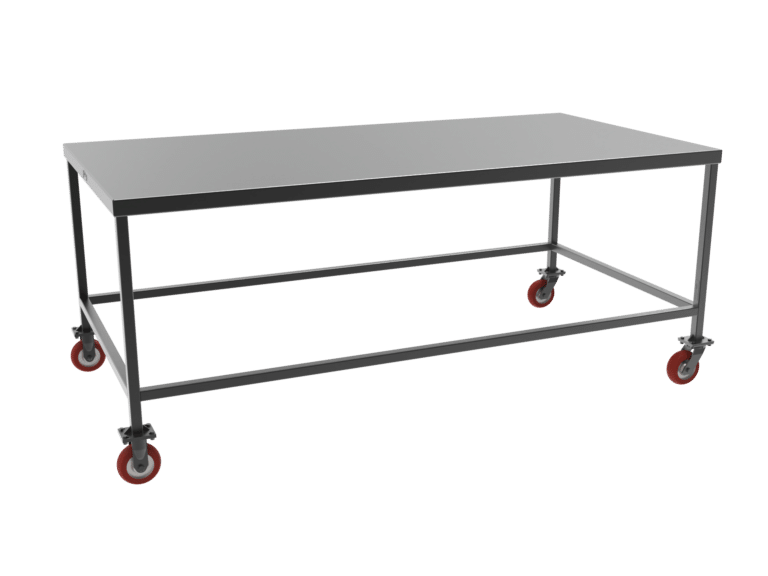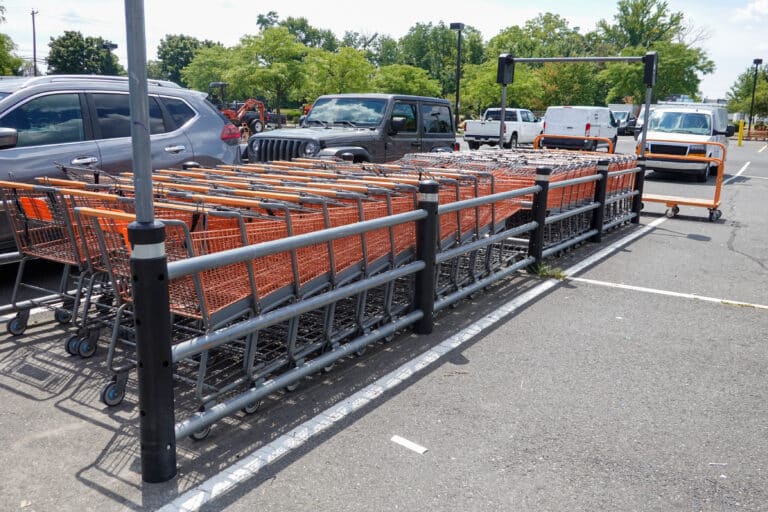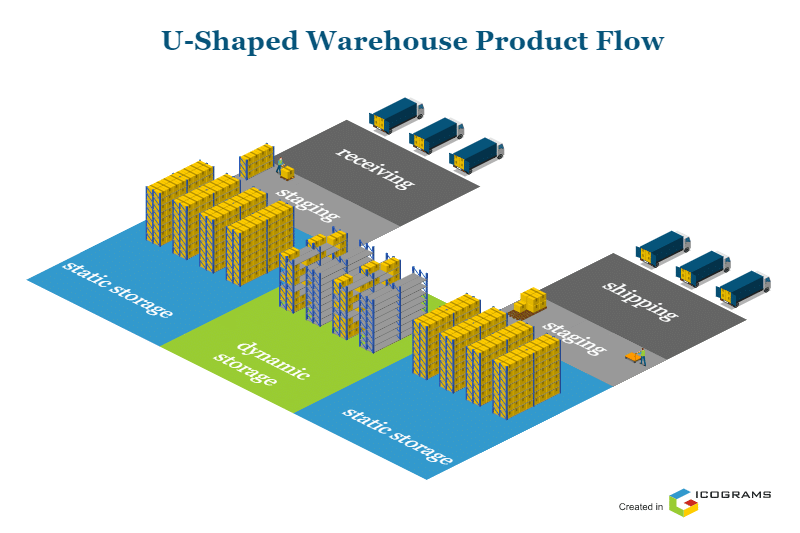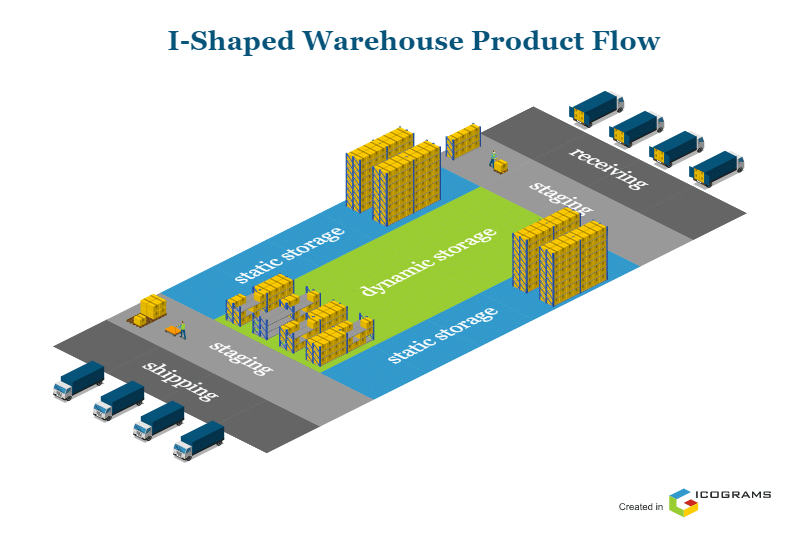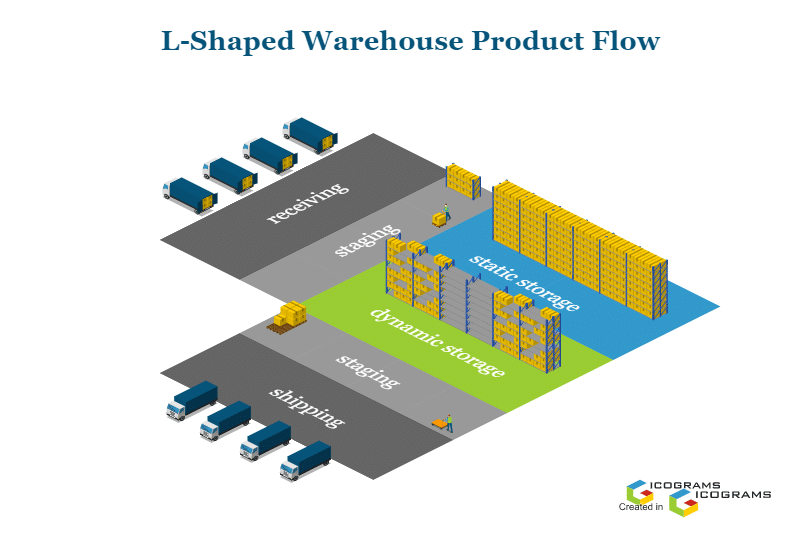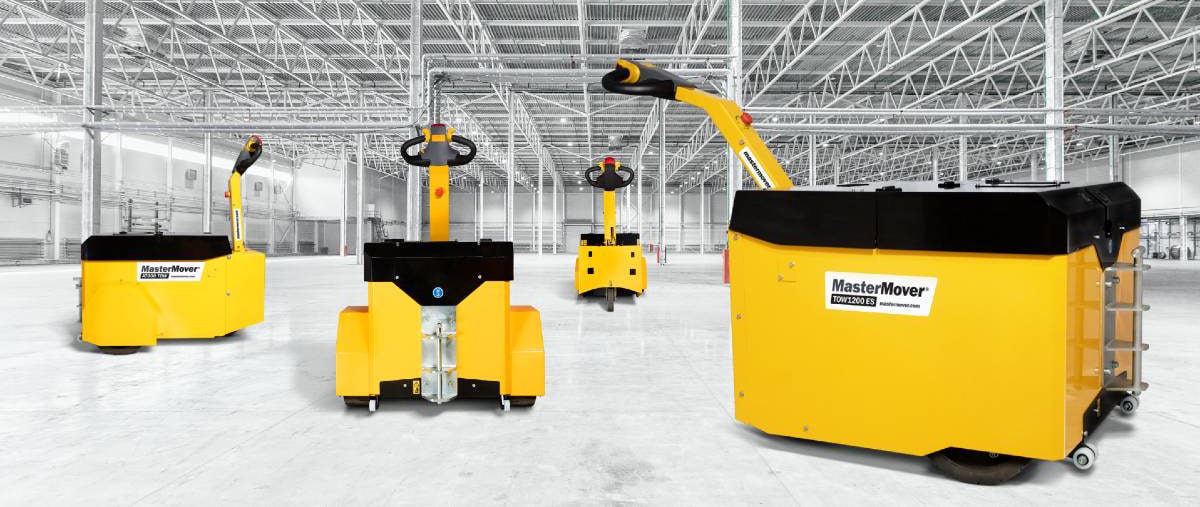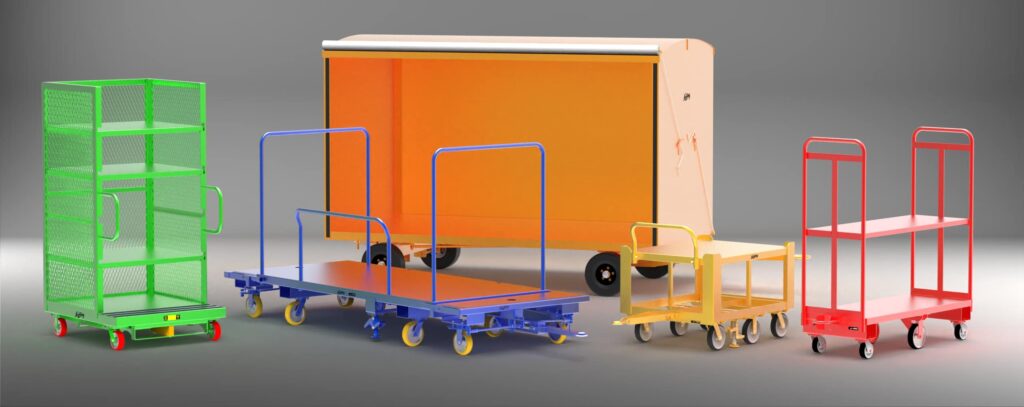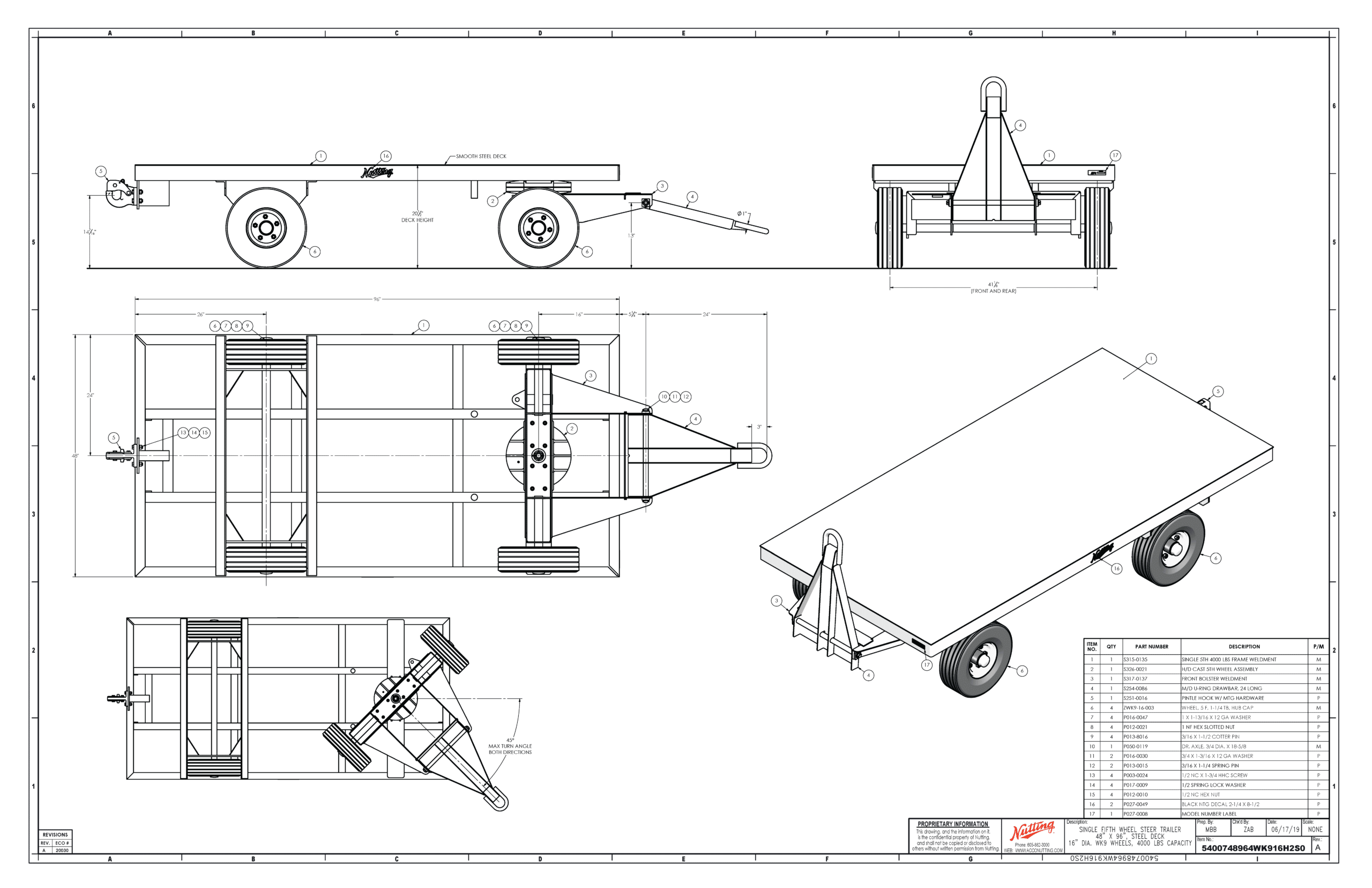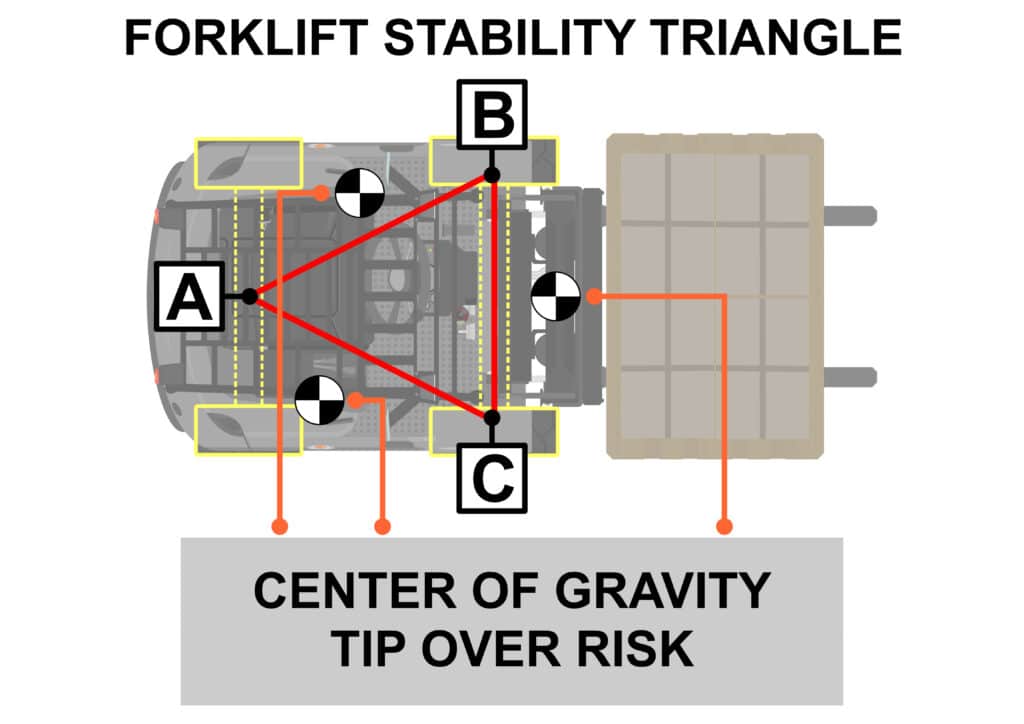Forklifts are a common sight in warehouses, manufacturing plants, and distribution centers, where they are used to move heavy loads and materials over short distances. But forklifts have some limitations and drawbacks that make them less than ideal for certain applications. Let’s explore some of the challenges of using forklifts in warehouses and dive into a better alternative that can improve productivity, efficiency, and safety.
Understanding Tugger Systems
Tugger systems, also known as tug carts or material handling carts, are a type of alternative material handling equipment used in warehouses and distribution centers. They are used to move heavy loads, like pallets or totes, around the facility floor. Tugger systems consist of a cart that is towed by a manual or electric tug, making them ideal for narrow aisles and tight spaces.
Tugger Systems vs. Forklifts
Compared to traditional forklifts, tugger systems offer several advantages. Forklifts require a trained operator, while tugger systems can be operated by an employee with significantly less training. Tugger systems are also more maneuverable and can easily navigate crowded warehouses. Tugger systems are also generally safer and more ergonomic, reducing the risk of workplace accidents and injuries.
Ergonomics
Tugger systems are designed to provide better ergonomics and safety in the workplace. Unlike forklifts, which require the operator to sit or stand in one position for extended periods, many tugger systems allow the operator to walk alongside the unit. This reduces the risk of operator fatigue and repetitive motion injuries. Tugger systems often have a lower center of gravity and better stability, which reduces the risk of tipping and other accidents.
Cost-effectiveness
These systems can be a cost-effective alternative to forklifts in many applications. Tugger systems typically have a lower initial cost than forklifts and require less maintenance. They also have a lower operating cost, as they’re often powered by batteries with charger systems that make recharging quick, easy, and convenient. Tugger systems can also be more efficient than forklift trucks in terms of energy usage and are designed to move heavy loads in fewer trips than if you moved the same loads with traditional forklifts.
Increased Efficiency and Productivity
Tugger systems are designed to handle heavy loads and move them quickly and efficiently. They can also be designed to tow multiple carts at once, which reduces the need for multiple trips. This can save time and reduce the risk of forklift accidents.
Maneuverability
Tuggers are highly maneuverable and can navigate through narrow aisles with ease. This makes them ideal for use in warehouses and other environments where space is limited. Unlike forklifts, which require a larger turning radius, tugger systems easily maneuver around obstacles and other equipment. (insert turning radius graphic from pdf)
Automation and Real-time Fleet Management
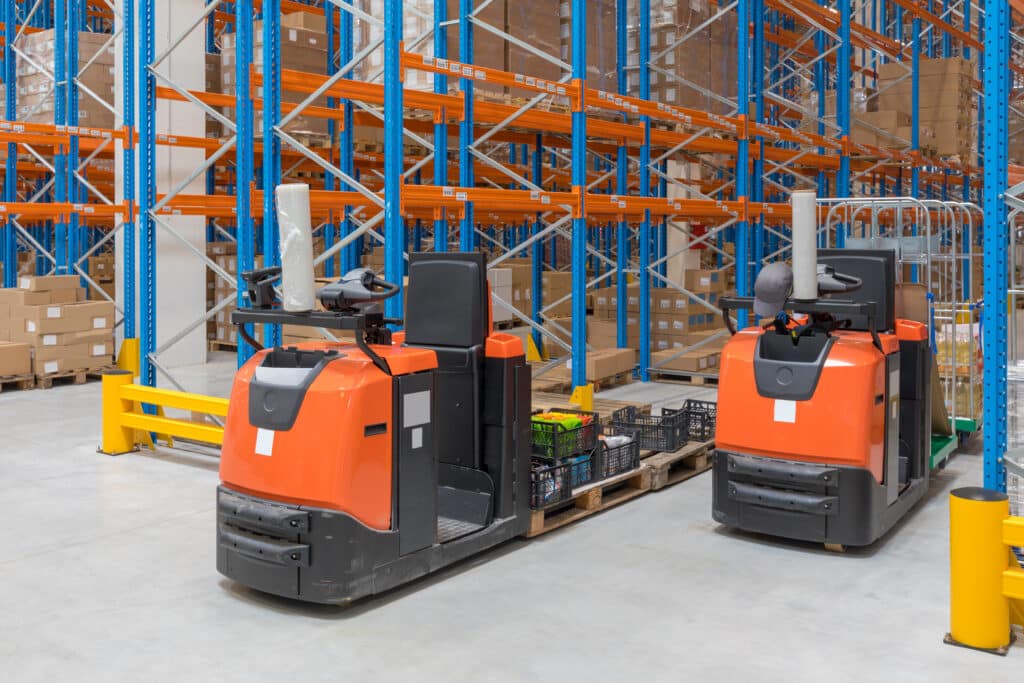
Tugger Systems Can Improve Workflow in Warehouses
Material Handling with Tugger Systems
These systems offer efficient ways to improve material handling in warehouses. Unlike traditional forklifts, tugger systems can transport a variety of loads, including pallets, machinery, inventory, and more, by towing them behind the vehicle. This eliminates the need for manual lifting and reduces the risk of injury for workers. Tugger systems can be equipped with features like adjustable tow bars and quick-release mechanisms to make the material handling process more efficient.
Pallet Stacking with Tugger Systems
Tugger systems have versatile functionality. For example, they can be set up as pallet stackers. With their maneuverability and narrow aisle capability, tugger systems can navigate through tight spaces find, pick up, and stack pallets quickly and easily. The actual stacking is done with customized carts that not only transport pallets but also vertically stack them. Tugger systems can offer better stability and control when stacking pallets compared to forklifts, reducing the risk of accidents and damage to the pallets.
Electric Tugs Provide Increased Safety Measures
Tuggers come in different types, including electric tugs that can handle heavy loads. Electric tugs are an excellent alternative to forklifts for moving heavy loads, as they provide greater operator visibility, reduced maneuvering risks, a lower center of gravity, and better traffic management, leading to a lowered risk of accidents in the warehouse.
Integration with Other Material Handling Equipment
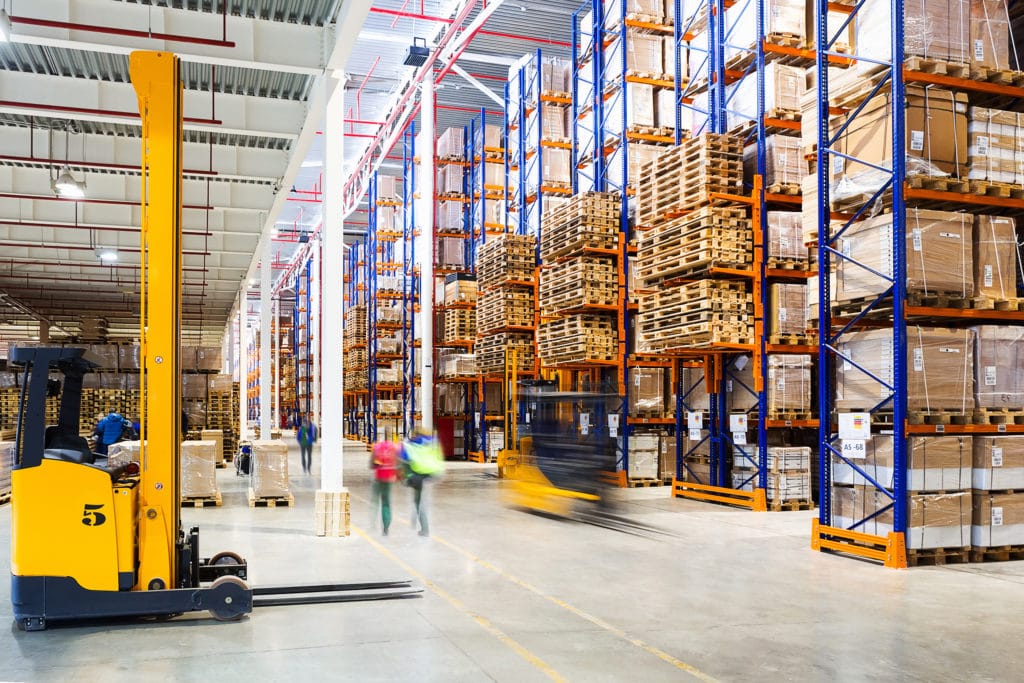
OSHA Regulations and Compliance
Tugger train systems can be designed and operated in a manner that complies with relevant Occupational Safety and Health Administration (OSHA) regulations. While specific compliance requirements may vary based on the jurisdiction and industry, here are some general considerations for ensuring compliance with OSHA regulations when using tugger train systems:
Operator training
OSHA requires employers to provide training to employees operating powered industrial trucks, which includes tugger vehicles used in tugger train systems. Training should cover topics such as safe operation, load handling, maneuvering, and awareness of potential hazards. Employers should ensure that operators receive comprehensive training and are certified or licensed to operate tugger vehicles. Tugger systems require less operator training than forklifts, reducing the time and cost associated with training and certification for forklift operators.
Equipment maintenance
Regular maintenance and inspection of tugger vehicles and trailers are crucial for compliance with OSHA regulations. Employers should establish a preventive maintenance program that includes routine inspections, repairs, and documentation of maintenance activities. Any identified safety issues or malfunctions should be addressed promptly to ensure the safe operation of the equipment.
Load handling and securing
OSHA regulations require employers to ensure that loads are properly secured and stable during transportation. This applies to both the tugger vehicle and the trailers in a tugger train system. Adequate load-securing methods, such as using appropriate restraints or tie-downs, should be employed to prevent load shifts, spills, or falling objects that could pose a safety hazard.
Traffic management
Employers should develop and implement traffic management plans to prevent collisions and ensure the safe movement of tugger train systems in the workplace. This may involve establishing designated travel paths, signage, and barriers to separate pedestrian and vehicle traffic. Adequate training and communication should be provided to employees regarding traffic rules and right-of-way procedures.
Personal protective equipment (PPE)
OSHA requires employers to assess workplace hazards and provide appropriate personal protective equipment (PPE) to employees. In the context of tugger train systems, PPE such as high-visibility vests, safety shoes, and head protection may be necessary depending on the specific work environment and potential risks involved.
Learn more
It’s important to note that OSHA regulations may encompass a broader set of requirements depending on the specific circumstances and industry. Employers should consult the relevant OSHA standards and regulations applicable to their operations, and work towards implementing appropriate safety measures to ensure compliance and protect the well-being of employees. To learn more, reach out to a Compliance Assistance Specialist in your area
Take the Next Step in Optimizing Your Wearhouse
Tugger systems are a game-changer in the world of material handling and offer numerous advantages over traditional forklifts. By integrating tugger systems into your warehouse workflow, you can significantly improve safety, efficiency, and productivity while reducing costs.
If you’re still relying on forklifts as your lift trucks for material handling, it’s time to take a look at the best alternatives on the market today. Contact us to learn how we can help you find the best tugger system solution for your warehouse needs and take your workflow to the next level!